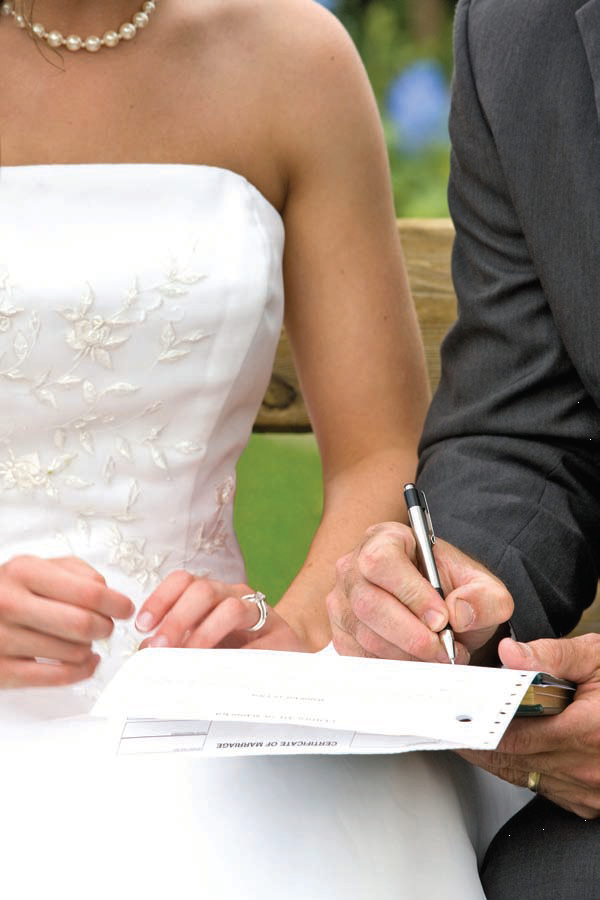Older women may face greatest financial risk in divorce
December 6, 2016What separating spouses can learn from the Brangelina split
May 26, 2017But even if married by someone lacking authority, couples who marry in good faith still have legal union
Back in August, 2016, it was widely reported that wedding officiant, Paul Cogan, was performing marriages in Ontario without the proper authority to do so. Many couples thought they were married, but it turns out they were not. (Cogan has been charged with solemnizing a marriage without authority.)
The legal question is: What is the status of the marriage and the “spouses?”
There are religious marriages and civil marriages. Often, from the outside perspective, they are the same. Often, the minister, rabbi or other religious officiant has the power to consecrate the marriage religiously and then to sign off on a marriage certificate, thereby making the marriage a civil or legally recognized union. The marriage certificate registration is the important aspect of the marriage for it to be marriage in law.
It is not uncommon for people to decide to forgo the civil aspect of the marriage and have only a religious marriage. A common reason for this can be that people want to be married but economic reasons, such as a financial benefit, will no longer be available if they are civilly married. Civil marriages are very common but the reasons for them can range from differing religions of the parties, cost, or non-affiliation with any religious order.
If you are married religiously only, the most obvious consequence is that you do not need a divorce upon the breakdown of the marriage. The marriage or union will be dealt with in a manner similar to common law relationships where there are no automatic property rights in the other parties’ accumulated property.
The more perplexing situation is when the parties “thought” they were married and most important, intended to be married. Cogan sent off many couples (48 couples according to newspaper sources) believing they were husband and wife and lawfully married. However, without a marriage certificate, the couples were not married.
In order to be married in Ontario, the parties must have registered the marriage with the province and have a marriage licence. No licence translates to no marriage. The Ontario Family Law Act, section (1)(b) defines “spouse” as “two persons who have together entered into a marriage that is voidable or void, in good faith on the part of a person relying on this clause to assert any right” as the result of the marriage.
Marriage means marriage under the Marriage Act. In s. 4 it then states that no marriage can be solemnized, except under the authority of a licence issued in accordance with the act. The case of Yangaeva v. Kershtein [2001] O.J. No. 6258, provides that there must be a recognition of each party to change their legal status from single to married. Furthermore, it states that there must be an official who is legally authorized to change the legal status of the parties from single to married. This is found in ss. 20 and 24 of the Marriage Act.
Where intention and what actually occurred do not align, the Marriage Act at s. 31 deals with marriages solemnized in good faith. In the event that the parties were married in good faith and intended to be married, so long as there is no legal reason to disqualify any party from being married, then the parties are married. Therefore, in the case of the parties married by Cogan, in all likelihood, if the they were under the impression Cogan was fulfilling his obligation to provide a legal marriage and this is what was intended, their marriages will be recognized a valid marriages. This would be notwithstanding Cogan’s lack of authority to perform a marriage. The good faith portion of s. 31 relates to the intention to comply with Ontario law. Lozinko v. Bazylok [1976] O.J. No. 402 found a marriage is valid where there was evidence that a marriage ceremony has been solemnized, the parties lived together as a couple and there is no evidence that this was not a marriage.
Destination weddings are very common today. While the margaritas may have been good, is the marriage good? Most resorts that perform weddings also require you to bring a marriage licence. While the resort may register the marriage for you, it is your responsibility to ensure the registration of the marriage in Ontario. This is good common sense. This is a precaution that should be taken when marrying abroad in order to ensure that the marriage is valid.
If a marriage is found to be invalid, then it is as if the parties are common law spouses and the dissolution of their relationship is treated in the same way unmarried couples are treated. However, if the marriage falls under s. 31 of the Marriage Act and the parties married in good faith, the parties intended to be married, then the marriage will be treated as valid, property and other issues will be determined as if the parties were married, however, there will be no need for a divorce certificate.
So if you marry in good faith and the marriage is solemnized, keep the presents.
Reesa Heft is the owner of Heft Law, a firm restricted to the practice of family law in the Greater Toronto Area.
This article originally appeared in the February 17, 2017 issue of The Lawyers Weekly.



